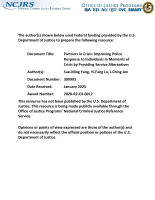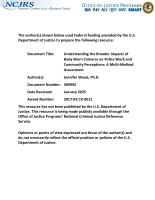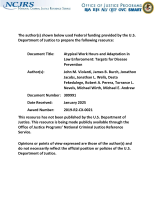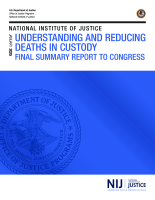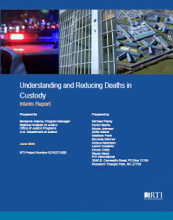Research and development
Partners in Crisis: Improving Police Response to Individuals in Moments of Crisis by Providing Service Alternatives
Understanding the Broader Impacts of Body Worn Cameras on Police Work and Community Perceptions: A Multi-Method Assessment
Atypical Work Hours and Adaptation in Law Enforcement: Targets for Disease Prevention
Understanding and Reducing Deaths in Custody: Final Research Report
Understanding and Reducing Deaths in Custody, Interim Summary Report
A Synthesis of the 2021 NIJ Forecasting Challenge Winning Reports
Estimation of Population-specific Values of Theta for PowerPlex Y23 Profiles
The Y-Chromosome in Forensic and Public Health Genetics
DNA Purification in Microfluidic Systems for Clinical and Forensic Application
Experimental and Numerical Investigation of Gypsum Calcination under Fire Exposure (Thesis)
Understanding and Reducing Deaths in Custody, Interim Report
Overview of Forensic Pathology
Human remains are treated as a separate and unique type of forensic evidence. An autopsy of the remains is conducted to establish the cause and manner of any death that is violent, unusual or untimely. A forensic pathologist completes a post-mortem examination and examine death scene findings. The medical history of an individual may also be reviewed to help determine if the death was natural...



